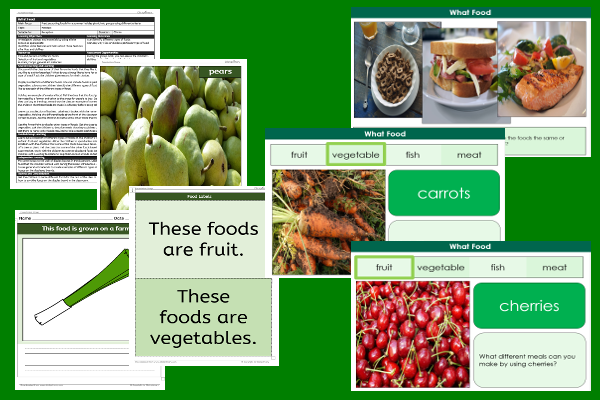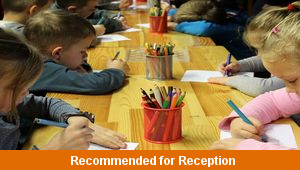Lesson One – What Food

This curriculum topic teaching pack for the Foundation Stage gets the children to practise sorting a selection of different foods that can be eaten on a family summer holiday picnic into matching groups using a range of criteria.
The class can make and record lists of foods that could be eaten on a picnic that are either grown on a farm or produced in a factory such as tomatoes or ketchup sauces .
Download this teaching pack including a lesson plan, classroom activities and an interactive presentation to practise sorting a selection of different foods that can be eaten on a family summer holiday picnic into matching groups using a range of criteria
Activities in this teaching pack include display posters to identify and describe different types of foods that can be eaten for a range of meals, a template to select and record whether a type of food is grown on a farm or produced in a factory using illustrations and text and a set o cards sort different types of foods into matching groups for fruit, vegetables, fish and meat.
The interactive presentation gets the children to explore how to sort a selection of different foods for a summer holiday picnic into matching groups using a range of criteria.
This lesson is part of a curriculum topic scheme of work to get the children to select, identify and prepare different types of foods for a picnic including sandwiches and fruit juice drinks by compiling shopping lists for a class outing. There are teaching activities for shared learning, differentiated worksheets to support independent learning and interactive presentations to introduce concepts and key skills.
-

Halving Things
Explain and model how to find and record the halves of some of the different objects that can be used at home and in school
-

School Friends
Identify and learn classroom routines and organisation by exploring and describing information and likes and dislikes for each of their classmates
-

Classroom
Identify the location and function of different objects used in the classroom and explore how to formulate rules to manage the classroom safely
-

Shape Patterns
Identify, describe and compare the sequences of geometric shapes that have been used to create a range of different patterns
